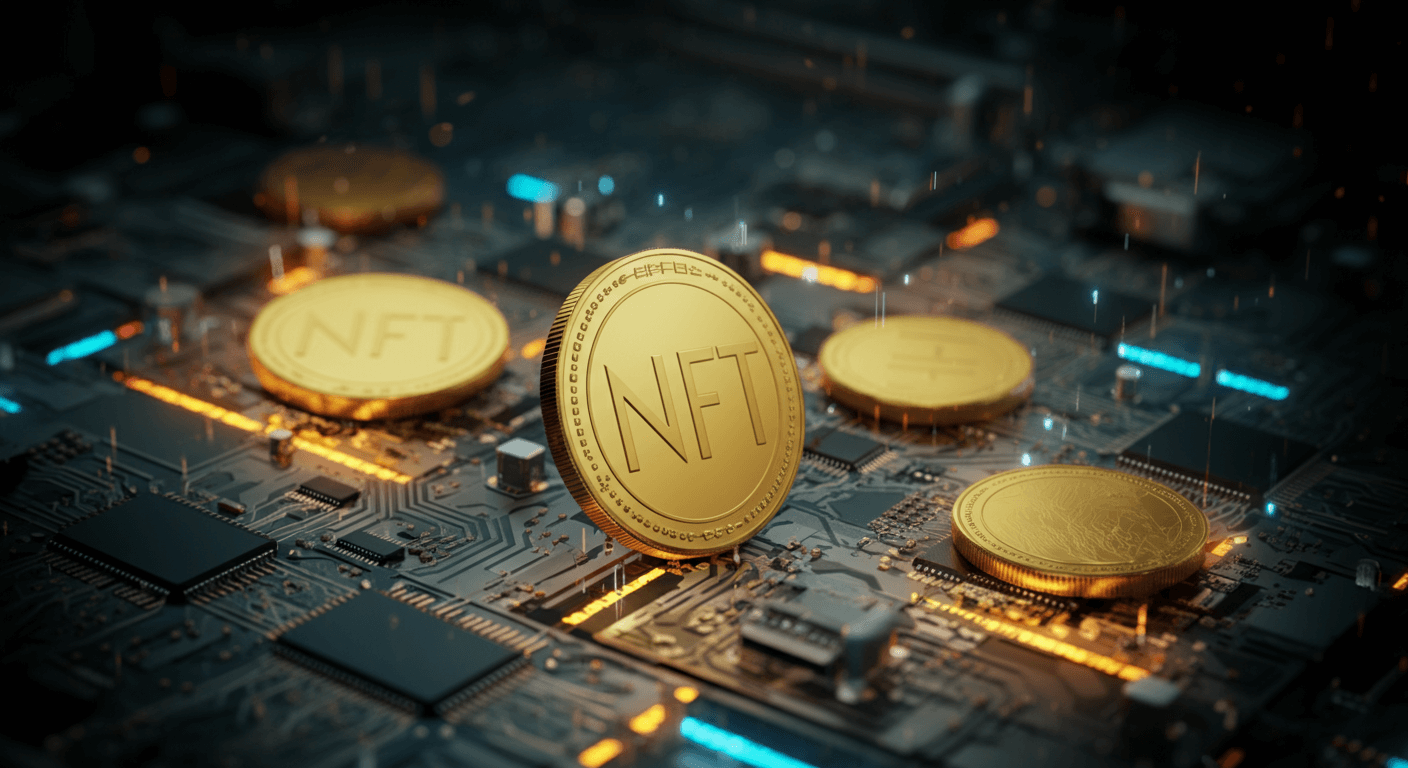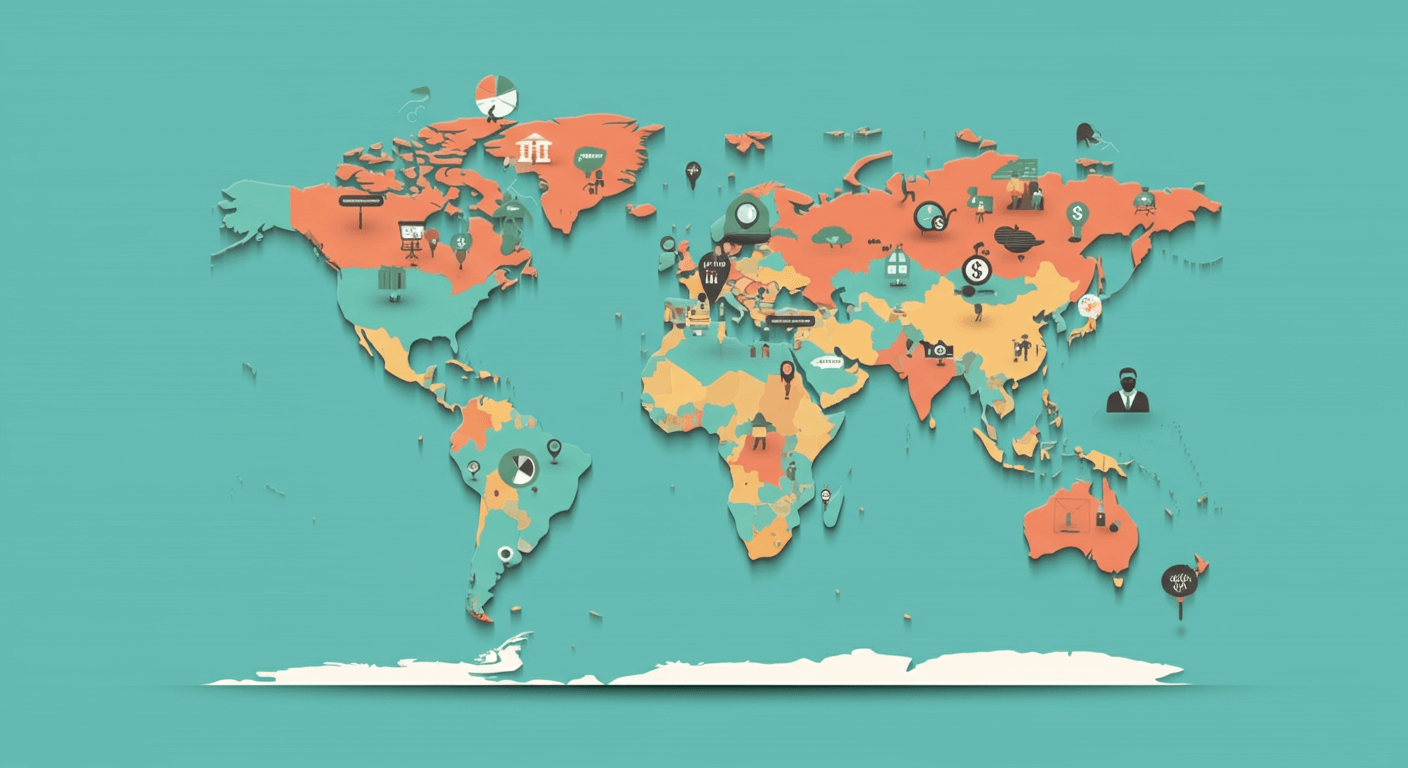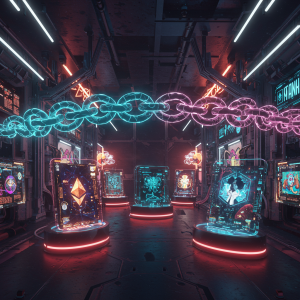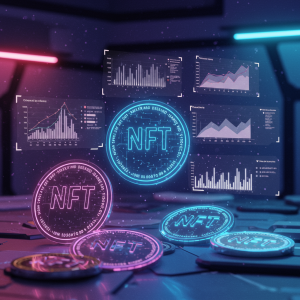NFT Digital Collection Platforms Market: Comprehensive Analysis

The marketplace for NFT digital collections has transformed dramatically since its mainstream emergence in 2021. What began as a handful of pioneering platforms has expanded into a diverse ecosystem serving different blockchain networks, creator communities, and collector preferences. This maturation reflects both the growing adoption of NFTs and the specialization necessary to serve distinct market segments.
Major Players Shaping the Market

The NFT digital collection platforms market features several dominant players alongside emerging specialists targeting particular niches. Each platform offers unique advantages and limitations that influence both creator and collector experiences.
OpenSea remains the largest marketplace by volume and user base, functioning as the default trading venue for most Ethereum-based collections. Its comprehensive approach accommodates virtually all NFT categories, from digital art to virtual land parcels. However, this broad focus comes with heightened competition and challenges in maintaining quality standards across diverse offerings.
Blur has rapidly gained market share by targeting professional traders with features like zero marketplace fees, portfolio analytics, and aggregated liquidity. According toDeFi Llama’s NFT marketplace tracker, Blur has consistently captured over 70% of Ethereum NFT trading volume in recent months, demonstrating the power of specialized tools for high-volume collectors.
Magic Eden dominates the Solana NFT ecosystem while expanding into Ethereum and Bitcoin Ordinals, positioning itself as a multi-chain alternative to single-blockchain marketplaces. Its launchpad services for new collections have become particularly influential in determining which projects gain initial traction.
LooksRare pioneered token incentives for marketplace participation, creating a model where traders earn platform tokens alongside their regular trading activity. This approach has influenced how newer marketplaces design their economics and community engagement.
At NFT Marketo, we’ve observed that successful platforms increasingly differentiate through specialized services rather than attempting to capture all market segments. This specialization trend benefits both creators and collectors through more tailored experiences.
Emerging Platform Categories
The NFT digital collection platforms market has evolved beyond general marketplaces to include several specialized platform categories:
Curated platforms like Foundation and SuperRare focus on digital art with strict artist vetting processes. These platforms prioritize quality and artistic merit over volume, creating gallery-like environments where collectors can discover emerging digital artists.
Gaming-focused marketplaces such as Fractal and IMX Marketplace cater specifically to in-game assets, offering features designed for game developers and players. These platforms typically support high-transaction volumes with minimal fees, essential for gaming economies where frequent, low-value trades are common.
Membership-based platforms like Nifty Gateway utilize a drops model similar to limited-edition physical collectibles. By creating exclusive release windows and cultivating collector communities, these platforms generate excitement and demand for curated collections.
Enterprise solutions from companies like Dibbs provide white-label marketplace infrastructure for brands entering the NFT space. These B2B platforms enable companies to create branded NFT experiences without building blockchain infrastructure from scratch.
Revenue Models and Economic Structures
NFT digital collection platforms employ various revenue models that significantly impact their market positioning:
Most established marketplaces generate revenue through transaction fees ranging from 2-5% of each sale. This model aligns platform success with overall market activity rather than specific collections.
Subscription-based platforms charge creators recurring fees for enhanced visibility, analytics, or special features. This approach provides more predictable revenue for platforms but creates additional costs for creators.
Token-incentivized marketplaces distribute native cryptocurrencies to active participants, creating complex economic systems where platform governance and financial rewards intersect. These models often aim to decentralize ownership and decision-making over time.
Zero-fee marketplaces generate revenue through premium features, priority access, or optional services while eliminating base transaction fees. This approach has proven particularly disruptive to established fee-taking platforms.
Technology Differentiation
Technological capabilities increasingly differentiate platforms in the maturing NFT market:
Multi-chain support has become essential as collections expand beyond Ethereum to blockchains like Solana, Polygon, and Tezos. Platforms that seamlessly integrate multiple networks provide collectors with unified interfaces for diverse holdings.
Metadata rendering quality varies significantly across platforms, with superior metadata display creating more engaging experiences for visual, audio, and interactive NFTs. Leading platforms invest heavily in rendering capabilities to support complex digital assets.
Smart contract flexibility allows creators to implement innovative features like evolving artwork, staking mechanisms, or fractionalized ownership. Platforms offering advanced contract deployment tools attract creators pushing technical boundaries.
Analytics and discovery tools help collectors identify promising assets and understand market trends. As the volume of available NFTs increases exponentially, these curation mechanisms become increasingly valuable for navigation.
Market Size and Growth Projections
The NFT digital collection platforms market has experienced dramatic fluctuations since its inception. After the explosive growth of 2021, when trading volume reached approximately $25 billion, the market underwent a significant correction throughout 2022 and early 2023.
Current market sizing indicates stabilization and measured growth, with global NFT marketplace transaction volume averaging approximately $800 million monthly. This represents a substantial decrease from peak levels but demonstrates the persistence of collector interest beyond speculative cycles.
Projections suggest the NFT platforms market will reach $37 billion by 2030, representing a compound annual growth rate of approximately 22%. This growth will likely be driven by increased institutional participation, integration with traditional industries, and technological improvements that enhance user experiences.
Regional Market Variations

The NFT digital collection platforms market shows significant regional differences in adoption, platform preferences, and use cases:
North American markets demonstrate strong interest in profile picture collections, generative art, and entertainment-linked NFTs. Major platforms like OpenSea and Blur capture the majority of this market segment.
Asian markets, particularly in South Korea, Japan, and Singapore, show greater adoption of gaming NFTs and virtual world assets. Regional platforms like OKX NFT Marketplace have gained significant traction in these territories.
European collectors gravitate toward art-focused platforms and collections with established provenance or artistic merit. This regional preference has supported galleries and museums entering the digital collection space.
Emerging market adoption, particularly in Southeast Asia, Latin America, and parts of Africa, focuses heavily on play-to-earn gaming and NFTs with economic utility beyond collection value.
Emerging Trends and Future Direction
Several key trends are shaping the future evolution of the NFT digital collection platforms market:
Integration with physical assets through techniques like phygital tokens (physical items with digital NFT components) is expanding the definition of digital collections. Platforms supporting these hybrid offerings are capturing new collector segments.
Improved user experiences with simplified onboarding and fiat payment options are reducing barriers to entry for mainstream collectors. This accessibility focus represents a significant shift from early platforms that required substantial technical knowledge.
Decentralized marketplace protocols are challenging the dominance of centralized platforms by providing trustless trading environments with reduced fees and censorship resistance. These protocols typically sacrifice some user experience simplicity for increased decentralization.
Creator-centric features like enhanced royalty enforcement, improved analytics, and marketing tools are becoming competitive differentiators as platforms compete for high-quality content.
Challenges Facing the Market
Despite promising growth trajectories, the NFT digital collection platforms market faces several significant challenges:
Regulatory uncertainty continues to impact market development, with different jurisdictions taking varied approaches to NFT classification and oversight. Platforms must navigate complex compliance requirements that vary by region.
Intellectual property concerns regarding unauthorized collections and copyrighted material remain prevalent across many platforms. Leading marketplaces have implemented verification systems and takedown processes, but enforcement remains challenging.
Fee competition has intensified as newer platforms offer zero-fee structures to attract volume from established competitors. This competition benefits traders but pressures platform sustainability and creator royalties.
Technical barriers including wallet complexity, gas fees, and security concerns continue limiting mainstream adoption despite significant improvements in recent years.
Conclusion
The NFT digital collection platforms market has evolved from a speculative frontier into a maturing ecosystem with distinct segments, specialized players, and increasing professionalization. While trading volumes have normalized from peak levels, the infrastructure for digital ownership continues strengthening through technological advancement and expanding use cases.
For creators and collectors navigating this complex landscape, platform selection increasingly depends on specific needs rather than general market dominance. The ongoing diversification of marketplace options suggests a healthy ecosystem where different value propositions can coexist rather than a winner-take-all environment.
As the market continues evolving, platforms that successfully balance creator empowerment, collector experience, and sustainable economics will likely capture the most significant share of the growing digital collections ecosystem.
For personalized guidance on selecting the optimal platforms for your specific NFT strategy, visit NFT Marketo, where we provide tailored marketplace recommendations based on your unique goals and requirements.





